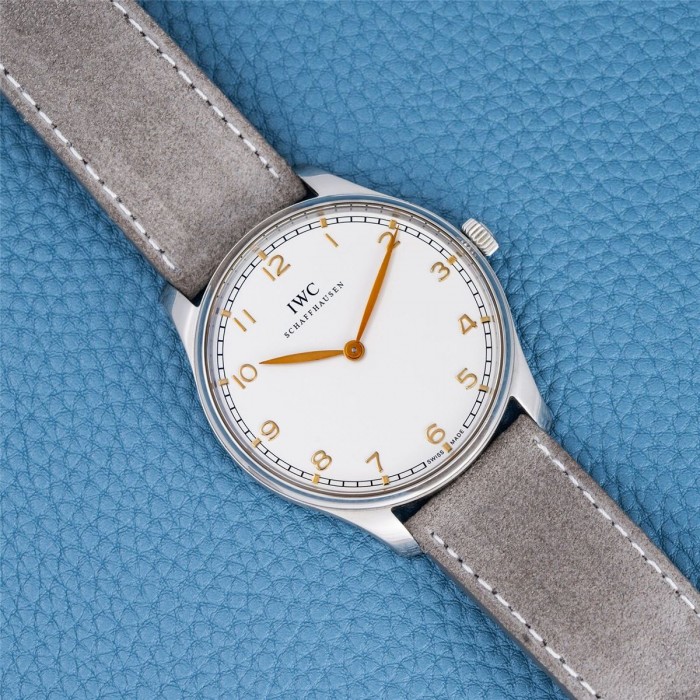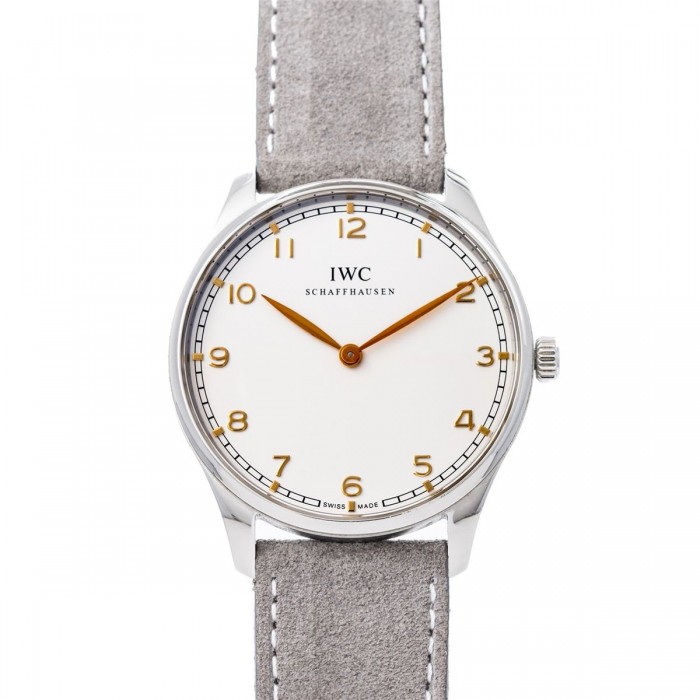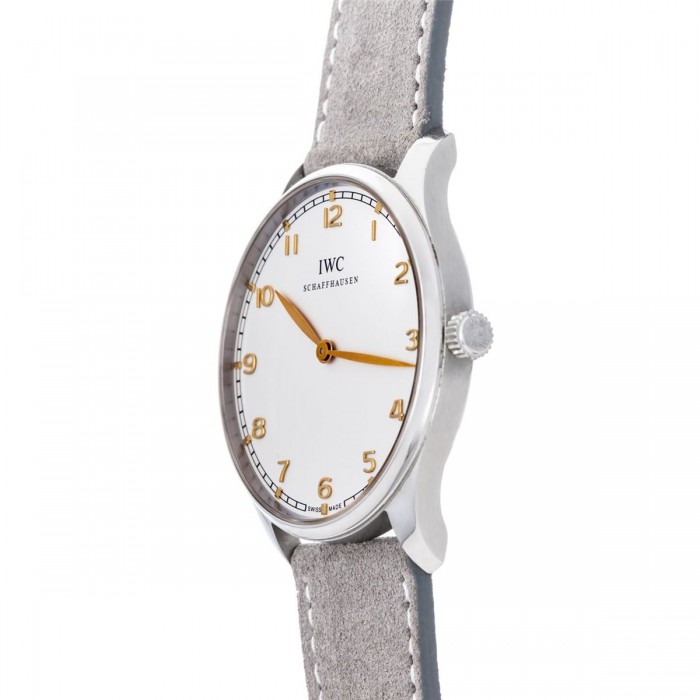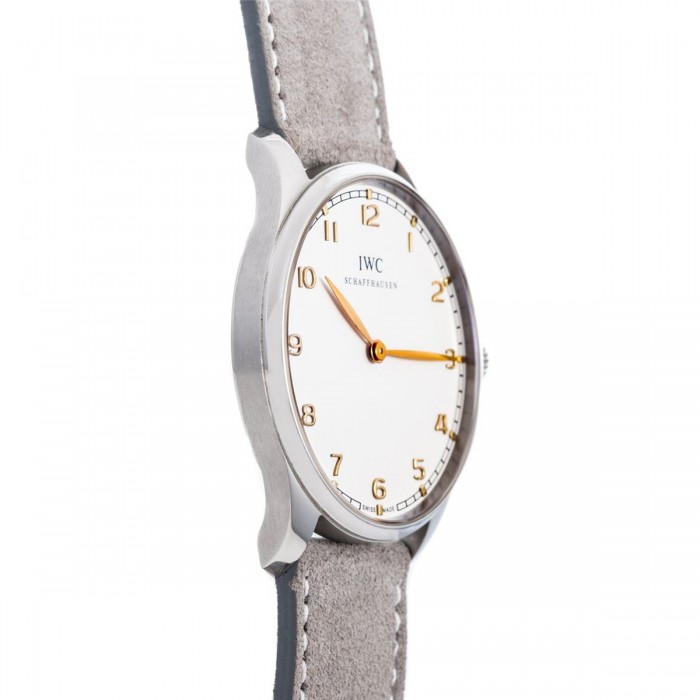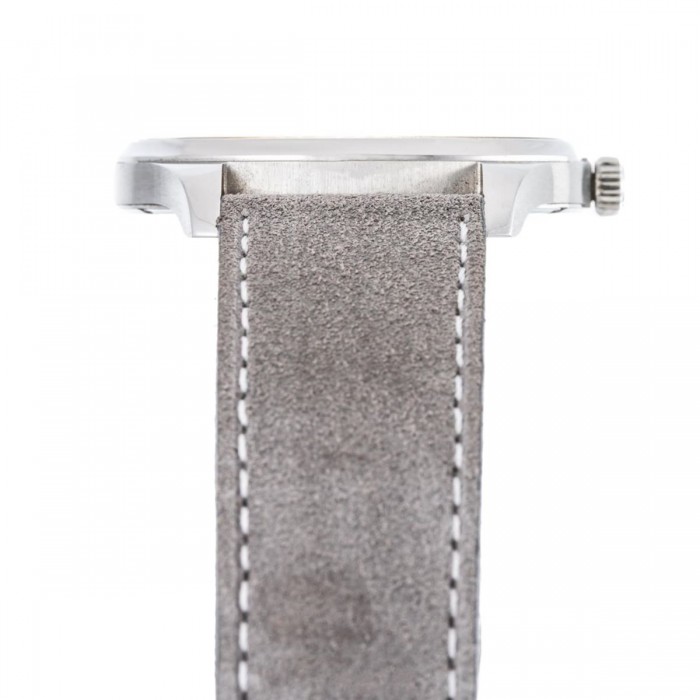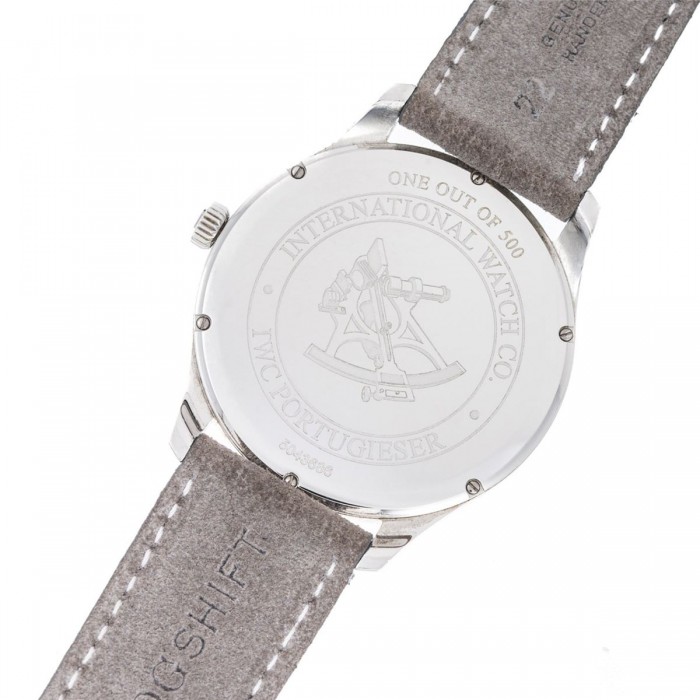Why We Love It
When considering the IWC Portuguese Pure Classic, the name really does say it all.
For the brand's 125th anniversary, IWC released the Portuguese Reference 5441. Referred to as the Jubilee, the appearance of the Reference 5441 was modeled on the original models from the 1930s, down to its Arabic numerals and gorgeous leaf hands.
Following the release of the 5441, IWC launched the Vintage Collection, with a range of watches from simple, time-only examples like the Portuguese to a “dress” (that is, non-pilot’s) chronograph.
And in 2010, IWC released the Classic collection, which took the traditional look of the Vintage Collection and gave it a more modern feel.
Which brings us to this watch, the Reference 5703, or Pure Classic. At the time of its release, IWC decided to modify the Portuguese even further, making it slimmer than its predecessors. Instead of using an in-house calibre, the manufacture decided to adapt a movement by Piaget, a brand known for the thinness of their movements, to create the Calibre 62060.
The Pure Classic was released in a limited edition of 500 pieces, and was never listed in IWC's catalog.
At 42mm, it’s in keeping with the proportions of the original Portuguese, but the movement from Piaget gives it an airy thinness that makes it an absolute pleasure to wear. A classic through and through, it’s a modern watch with enough history and heritage to please even the most stalwart of vintage watch connoisseurs. Consider us impressed.
The IWC Portugieser Story
In the 1930s, the manufacture found its niche in robust, no-nonsense pilot’s watches such as the Spezialuhr für Flieger. However, IWC also launched a number of thoughtful and elegant watches in that decade, known by collectors now for the simplistic beauty of their movements. Many of them fell into the Portuguese line.
The Portuguese was so-called because two IWC clients from Portugal approached the manufacture with a somewhat daunting task: to produce a wristwatch that was just as accurate as a marine chronometer. In those days, the only way to ensure that degree of accuracy in a wristwatch would be to cannibalize a movement from a pocket watch and put it in a wristwatch case. The watches the resulted from such a union were large, a huge departure from the slim cases that typified wristwatches of the era.
So that’s what IWC did, using a Hunter Calibre 74 pocket watch movement to create the first Portuguese in 1939.
At 44mm, the first Portuguese was absolutely massive for the time, yet not without its elegance. Details such as feuille hands and embossed Arabic numerals made it resonate with the grandeur of the old pocket watches from which its movement was taken. Yet despite the esteem in which collectors hold them today, the Portuguese line was never that plentiful, with only 304 examples being produced with the Calibre 74, and only 371 examples with the Calibre 98 or Calibre 982 through the 1970s.
However, in the 1990s, a chance visit by a customer—who wore an original Portuguese on his wrist—inspired IWC to revitalize the failing collection.

No questions about this product, be the first and ask your question.



